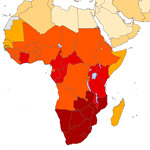Current
Growing Up With Media
The Growing up with Media survey includes 1586 households of children between the ages of 10 and 15 years old. The aim of the survey is to examine how media may be affecting the behavior of young people.
Previous
Healthy Relationships East Africa
HIV/AIDS is a major contributor to morbidity and mortality in eastern Africa. For example, in Uganda, an estimated 7.3% adults HIV positive. Men who have sex with men (MSM) bear a particularly high disease burden. Despite this increased risk, there is a considerable dearth of scientific literature documenting the barriers and facilitators to behavior change in this vulnerable population. We need to better understand the HIV risk and protective behaviors of MSM and other sexual minority men in Uganda, if we are to develop effective prevention programming. The almost complete lack of research examining the HIV risk of sexual minority women and transgender people is also problematic. Despite assumptions that sexual minority women are not at risk for HIV, compelling seroprevalence and HIV risk behavior data suggest otherwise. Of the handful of studies that have been published on African tran …
Relationships in the Digital World
As greater numbers of Americans use social and other networked technologies, they increasingly use these tools to create and maintain their personal and intimate relationships. These technologies can play both positive and negative roles in personal relationships. Stalking and digital domestic abuse are two aspects of negative experiences online. For example, stalking is a disturbingly common experience. A recent national study of 16,500 adults in the United States found that one in six women and one in 19 men have been stalked to the point of creating fear. A better understanding of how dating abuse is perpetrated and experienced through technology, particularly across age groups, is critical to future prevention efforts. In collaboration with Amanda Lenhart and the Data & Society Research Institute, we will conduct a nationally representative landline and mobile phone survey of 3,0 …
Teen Health and Technology
Because of contextual factors such as prejudice and social isolation, lesbian, gay, bisexual, and transgender (LGBT) youth consistently report victimization rates higher than heterosexual youth. It is possible that LGBT youth may similarly face increased risk for victimization online. Alternatively, because the Internet equalizes the playing field by allowing people to communicate and find social support that may be lacking in face-to-face relationships, the Internet may represent a positive influence in the lives of LGBT youth. Using an innovative online data collection strategy that enabled us to over-recruit LGBT youth as part of a larger sample of young Internet users, the Teen Health and Technology study examined the potential risk and protective factors that Internet use poses to adolescent health. Findings have applied implications for adolescent health research by identifying pos …
Cape Town Adolescent Health Survey
HIV/AIDS is a major contributor to morbidity and mortality in South Africa, where an estimated one in five adults are HIV positive. Young people bear a particularly high disease burden: 34% of new cases of HIV occur among those 15-24 years of age. Moreover, it is estimated that if the current HIV infection rates remain stable in South Africa, 50% of 15-year-olds alive today will die from AIDS. The impact that HIV is having on South African adolescents cannot be overstated. Several researchers have recently noted that adolescent-focused interventions in South Africa are not having an impact as effective as desired. Certainly, interventions that are low-cost, scalable, and modifiable to reflect changing behavioral trends, such as the Internet and text messaging, should be considered as additional tools to add to the arsenal of available HIV prevention programs. We conducted a survey i …
Growing up Social
COVID-19 has had a significant impact across the U.S., resulting in over 31 million cases and 559,000 deaths as of April 14, 2021. Since the beginning of the pandemic, a number of public health policies have been implemented to help reduce the spread of the virus, including social distancing, home quarantine, and school closures. With these public health policies has come a sudden and dramatic shift in our lives, and this is particularly true for adolescents who are navigating a critical and unique developmental period. As of April 2021, one in six teenagers (16.3%) have tested positive for COVID-19. Understanding the factors that confer increased risk is imperative given adolescents’ vulnerable developmental stage. The pandemic also has reified long-standing health inequities. Indeed, data overwhelmingly suggest that Black/African American and Hispanic people are significantly more like …





